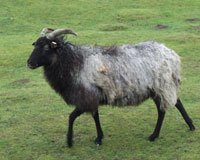Viking Food and Dining
 The Vikings had bowls and plates very similar to modern day, but made most often from wood rather than pottery. They ate with a sharp pointed knife, which served as both a knife and a fork. The fork is a later development. Spoons were made from wood, horn or animal bone. They were often carved with patterns of interlaced knotwork and the heads of fabulous beasts. Drink was taken in horns, similarly decorated and sometimes with metal tips and rims.
The Vikings had bowls and plates very similar to modern day, but made most often from wood rather than pottery. They ate with a sharp pointed knife, which served as both a knife and a fork. The fork is a later development. Spoons were made from wood, horn or animal bone. They were often carved with patterns of interlaced knotwork and the heads of fabulous beasts. Drink was taken in horns, similarly decorated and sometimes with metal tips and rims.
Early Danes were farmers before they were Viking adventurers. Diet consisted of various grains including rye, barley and wheat. A common dinner might have consisted of a stew of boiled lamb, turnips, beans, peas and carrots. Bread was an important part of the Viking diet. Meat in the Viking diet was largely venison or pork.
In addition, the Vikings consumed a variety of seafood (herring, cod, shellfish).
The preservation of food was always a important consideration in Viking society. Meat and fish were often smoked or rubbed with salt for preservation. Fruit was eaten fresh, but was often dried; grains were often made into bread or ale. Dairy produce such as milk was made into cheese. Cooking meat would make it last a little longer, and sausages were made to make the meat last longer still.
LastUpdate: 2015-03-28 16:34:29
